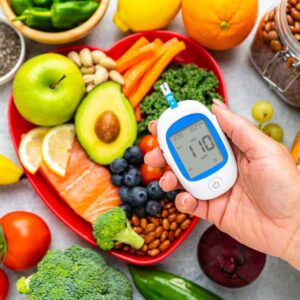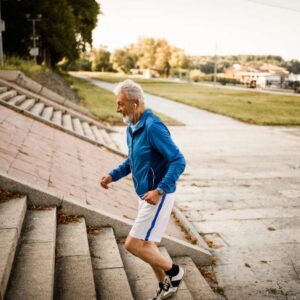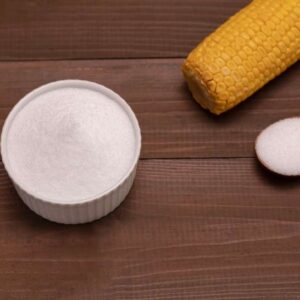
Chronic “Fight or Flight” Mode Harms Your Health
Let me tell you a tale about a little part of our brain that can cause us a LOT of trouble…
It’s called the amygdala.
And while it’s small, it has a massively important job.
The amygdala is where most decisions are made about how to react to potential dangers in the environment.
Its primary job is to keep feelings like fear and anger in check UNTIL the body senses a threat. Then it springs into action.
But this ancient part of the brain faces challenges in our modern world.
When you’re in danger, the amygdala comes out swinging. It makes you feel scared and angry until you escape from the threat.
The amygdala will keep up the fight as long as the threat remains. But here’s the problem: threats have changed over the years.
Your ancient ancestor might have fought off a saber-toothed tiger or engaged in hand-to-hand combat against a neighboring tribe.
But once the threat had passed, their parasympathetic nervous system “applied the brakes,” dialing down the stress response (more on this in a moment). And their body’s systems returned to normal.
In today’s society, we’re sometimes faced with multiple “threats” a day. Something as simple as a distracted driver, an angry boss, walking down a dark street, or an upsetting social media post can activate your amygdala.
In other words, we’re STUCK in fight or flight mode a LOT of the time. And that puts a lot of stress on the body as it prepares for whatever may come.
- The hormone epinephrine surges through your body.
- Your heart beats faster, pushing blood to your heart, muscles, and vital organs.
- Your blood pressure and pulse rate rise.
- You breathe more rapidly, and your lung’s airways expand.
- Your senses become sharper.
- Glucose and fat are released, giving you extra energy.
If you need to dodge a punch or jump out of the path of a speeding train, thanks to your amygdala, you can. In fact, all those changes allow you to do it without even having to think.
But if the stress response never gets switched off, you can eventually end up battling the health problems that come with chronic stress.
Chronically elevated epinephrine can damage arteries and blood vessels, boosting blood pressure and raising your risk of heart attack and stroke. And the stress-hormone cortisol can trigger overeating, fat storage, and unhealthy weight gain.
In a way, your amygdala works harder in today’s manmade environment than it ever would in the natural world.
But the good news is there IS a way to put your amygdala to sleep. And it couldn’t be simpler. All you have to do is take a stroll through a primarily green or blue area..
Head outdoors and find someplace where lots of green things are growing, or there’s a large body of water (or better yet, both). Spending as little as 30 minutes in a natural setting can help calm the amygdala.
So, to flip your amygdala’s switch into sleep mode, spend some time every week communing with nature.
P.S. Discover how spending more time near a greenway, forest, or park (green spaces) OR a lake, ocean, or other waterways (blue spaces) can literally keep you OUT of the hospital. I’ve got the scoop RIGHT HERE.
Written By Dr. Scott Olson, ND
Nearly 25 years ago, failed mainstream medical treatments left Dr. Olson in constant pain – and his health in ruins. And that’s when he did something REVOLUTIONARY. He began his career in medicine – and dedicated his life to uncovering the true, underlying causes of disease.
Through his innovative medical practices in Tennessee and Colorado, Dr. Olson has helped cure countless seniors from across America of arthritis… heart disease… diabetes… and even cancer. All without risky prescription drugs or painful surgeries.
View More Free Articles
Stop Obsessing Over Diet Trends
Can we stop with the endless diet debates already? Every other week there’s a new headline shouting about which diet is best for weight loss, heart health, or diabetes. Paleo, keto, low-carb, high-protein… it’s exhausting. And now, a new meta-analysis is out comparing the Mediterranean diet, the DASH diet, and something called AHEI (that’s “Alternative...
A New Reason to Ditch Processed Junk
If you’ve ever walked the inside aisles of your local grocery store and thought, “This is all just junk,” your instincts were spot on. A new study published in the journal Thorax just added another red flag to the list of dangers linked to ultra-processed food—a 41 percent higher risk of lung cancer. That’s right....
When Being Winded on Stairs Is Serious (And When It Isn’t)
I had an athlete visit me recently because he experienced shortness of breath while climbing stairs. He is in great shape, so he was worried about what it might mean. “Doc,” he said, “I run five miles three times a week. Why am I huffing and puffing after two flights of stairs?” His concern is...
Study EXPOSES Hidden Danger Lurking in Your Car
We think of our homes and cars as safe havens. But according to a startling new study, they may be flooding your lungs with microscopic plastic particles—every single day. Researchers in France recently found that adults inhale an average of 68,000 microplastic particles daily from indoor air alone. To put that in perspective, that’s about...
Mailbag: Is Modern Food Making You Snore?
“What can cause snoring, and is there a way to correct this issue?” —Seeking Silence Hi Seeking, Snoring happens when the soft tissues in your throat relax and vibrate as air passes through during sleep. While several factors can cause snoring—from sleep position to nasal congestion—I want to share one trigger that might surprise you....
Simple Food Swap SLASHES Dementia Risk 28%
Let’s be honest… who would jump at the chance to cut their dementia risk by 28 percent. And no, you don’t need to run marathons, survive on broccoli, or learn to play the zither (whatever that is) to make it happen. All it takes is one easy swap—something that’s probably already in your refrigerator. Researchers...
This SMART Floss Exposes Hidden Health Danger
Scientists have created dental floss that doesn’t just clean between your teeth—it also tracks your stress while you’re flossing. Now, I know what you’re thinking… “Great—now even flossing is going to stress me out by telling me how stressed I am.” But this fascinating new tool from Tufts University could be a game-changer for understanding...
Is This "Safe" Sweetener Damaging Your Brain?
The headlines are alarming… “Popular Sugar Substitute Linked to Brain Cell Damage” and “Erythritol Could Damage Critical Brain Barrier” are just two of the dozens I’ve spotted recently. But before you toss every sugar-free product in your pantry, let’s take a closer look at what this study actually shows—and what it doesn’t. The latest research...
This Summer Threat Could SPIKE Your Blood Sugar
Picture this… It’s another scorching hot summer day. You crank up the air conditioning while watching the weather forecast, which predicts yet another “record-breaking” heat wave. It’s starting to feel like just another miserably uncomfortable summer. But what you might not realize is that—if you have diabetes—those rising temps could do far more damage to...
Move Over Yogurt—5 Foods That Pack MORE Probiotics
Let’s talk about your gut. The microbiome is the collection of trillions of bacteria and other tiny organisms that live in and on your body—especially in your gut—and help keep you healthy. I’ve written often about how vital it is to maintain a healthy microbiome. And you might have dutifully added yogurt to your shopping...









